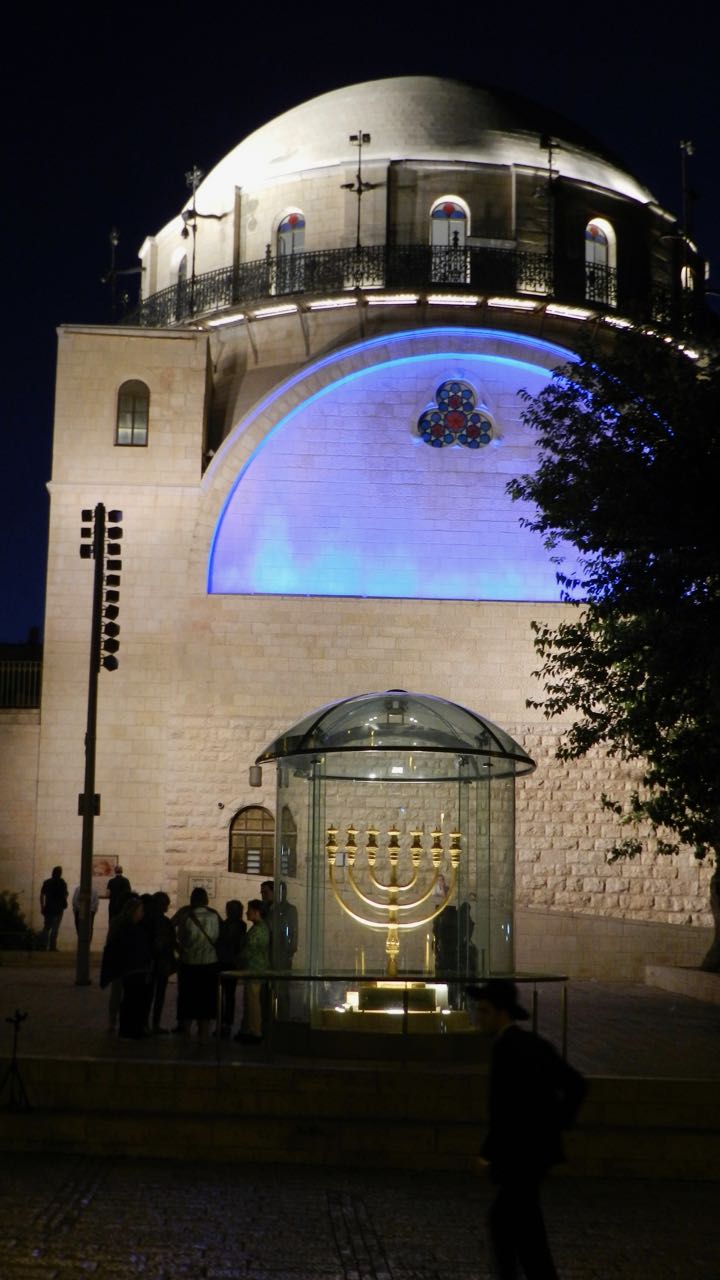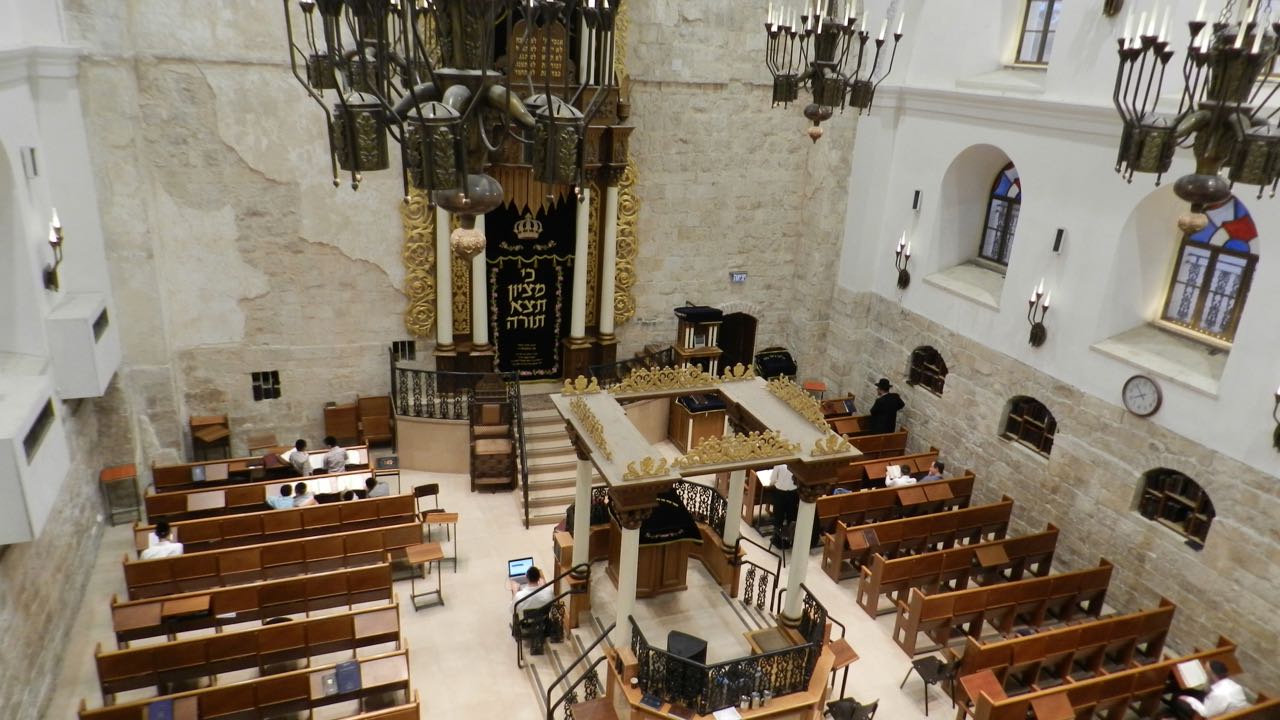https://blog.myheritage.com/2021/03/80-years-after-her-fiance-died-in-a-car-crash-their-descendants-found-each-other/
https://blog.myheritage.com/2021/03/80-years-after-her-fiance-died-in-a-car-crash-their-descendants-found-each-other/
Keturios plungiškio Jankelio Simono Blocho kartos
Jankelis Simonas Blochas
By Eugenijus Bunka
eugenijusbunka@gmail.com
1898 metų gegužės keturioliktą Plungėje, dažytojo bei kurpininko Leizerio ir Chajos Blochų šeimoje gimė Jankelis Simonas. Nieko nuostabaus, kad jis taip pat tapo kurpininku, bet prieš tai nuo vienuolikos iki penkiolikos metų mokėsi šokti.
Iki šiol neteko girdėti, kad Plungėje dar iki Pirmo pasaulinio karo buvo šokių mokykla, bet tą faktą reikia pripažinti, nes Jankelio Simono gyvenime ji suvaidino itin svarbų vaidmenį.
Bet tai bus vėliau, o tada, 1913-aisiais, būdamas vos penkiolikos, išvažiavo į Varnius dirbti batsiuviu, o po šešerių metų ir vesti vietinio batsiuvio dukrą Zisę Sandler.
Jankelis Simonas Blochas su žmona Zise, regis, dar Varniuose
Porai sekėsi neblogai, be kasdienio darbo jie abu dar ir vaidino vietiniame teatre, ir sukosi žydiškų tautinių šokių ratelyje. Ką gali žinoti, gal šoko ir žemaitiškus, nes tokių pavyzdžių bent jau Plungėje yra. Dalia Vaitkutė, draugavusi su bendraklase, malūnininko ir pirmos Plungės elektrinės savininko Hackelio Zakso dukra Haika, pasakojo, kad draugė apsirėdydavo žemaitiškais tautiniais rūbais ir šokdavo gimnazijos ar miesto šventėse.
O Varniuose Jankeliui Simonui ir Zisei gimė penki vaikai. Deja, du mirė dar mažyčiai.
Didžiojon Britanijon nutekėjusi Zisės sesuo Poli, 1920 metais persikėlė gyventi į Australiją, kvietė atvažiuoti ir varniškius, atsiuntė visus imigruoti į šalį reikalingus dokumentus.
Bet 1930 metais Australijon išplaukė vienas Jankelis Simonas. Kaip ir daugelis žydų emigrantų iš Lietuvos, iš pradžių susirado darbo, paruošė buitį visai šeimai. Nebuvo lengva, bet po trejų metų visi vėl buvo kartu.
Australijoje tapęs Džeku Blochu ir ieškodamas darbo pagal specialybę, vienoje parduotuvėje išvydęs baleto batelius, jis nutarė, jog tai – jam: batsiuviui, šokėjui, aktoriui, muzikantui.
Sidnėjaus Padingtono rajone, Oksfordo gatvėje jis išsinuomojo nedideles dirbtuves ir Sidnėjaus baleto mokyklos mokiniams pagal užsakymus siuvo jiems reikalingus batelius, vėliau – batus rusų, airių, škotų šokių šokėjams.
Užsakovai buvo patenkinti, verslas sekėsi. 1936 metais Jankelis Simonas dirbtuves perkėlė arčiau Sidnėjaus centro, į didesnes patalpas Darlingharste, Teiloro aikštėje.
Trisdešimtaisiais praėjusio amžiaus metais Australijoje virė kultūrinis gyvenimas, baleto trupės iš viso pasaulio važiavo atrasti naujo žemyno ir naujų žiūrovų. Andre Levitovo trupėje, pulkininko de Bazilio rusų balete iš Monte Karlo Jankelio Simono siūtus batelius avėjo garsiausi to meto šokėjai.
Taigi. Pirmoji „BLOCH“ baleto batų pora buvo sukurta žvakių šviesoje 1932 metais, o šiandien jau trys kartos tęsia plungiškio Jankelio Simono pradėtą darbą ir neapleidžia vienų geriausių pasaulyje baleto batelių gamintojų pjedestalo.
Beti Bloch-Vilkenfeld
Jankelio Simono dukra Bracha gimė Varniuose, į Australiją atvažiavo 1933 metais, mirė sulaukusi aštuoniasdešimt septynerių.
Beti Bloch-Vilkenfeld
Kai rusų baleto šokėjai atvažiuodavo į Sidnėjų, jos tėvas pasisiūlydavo jiems vertėjauti, bet kartu ir rinkdavo užsakymus puantams, kuriuos girdavo kaip stiprius ir ilgaamžius. Su juo dažnai būdavo ir Brachos vardą į Beti pakeitusi duktė. Kol tėvas bendraudavo su šokėjais ir jų vadovais, ji spindinčiomis akimis stebėdavo spektaklius iš užkulisių.
1953 metais ištekėjusi už Geršono Vilkenfeldo, ji dirbo žydų švietimo taryboje, dėstytojavo Morijos koledže, bet netrukus prisijungė prie tėvo ir brolių verslo, tačiau visą gyvenimą tęsė švietėjišką darbą ne tik asmeniškai, bet ir dosniai ji remdama, buvo Montefiore švietimo sistemos pradininke Australijoje.
Iki šiol ji prisimenama kaip „labai gerbiama visuomenės atrama“, „ori ir žavi“, Australijos žydų bendruomenėje palikusi gilų pėdsaką.
Džudi Vilkenfeld
Varniškės Brachos-Beti dukra ir Jankelio Simono anūkė Džudi viename interviu pasakojo, kad ji nuo mažens jautėsi esanti menininkė, bet pasirinko pedagogines studijas. Tačiau kai gimė jos pirmasis sūnus, sumanė sukurti jam „interaktyvią knygą“. Ją pamačiusios, kitos mamos irgi užsinorėjo kažko panašaus.
Antrojo sūnaus tryliktam gimtadieniui Džudi vėl padarė meno kūrinį-knygą, o po jos atsiradimo – ir save kaip menininkę.
Žodžiais jos kūrinius sunku apibūdinti, juos reikia pamatyti. Džudi apie pasaulį, gyvenimą pasakoja ne potėpiais, o daiktais, kalbančiais apie žmones, jų santykius, įvykius – visą pasaulį ir jame verdantį aistrų, gėrio ir blogio, grožio ir juodulių, šviesos ir šešėlių katilą.
Džudi Vilkenfeld ir jos kūriniai
Prieš atvažiuodama aplankyti senelio gimtinę, Jakovui Bunkai ji parašė laišką, papasakojo apie savo giminę, o pabaigoje vienu trumpu sakiniu kukliai užsiminė „Aš taip pat esu menininkė“.
Tuo tarpu Google paieškos sistemoje apie ją yra beveik šimtas tūkstančių įrašų. Jos darbų paroda garbę darytų ne tik Žemaičių dailės muziejui, tačiau ir bet kuriai Europos galerijai.
Tal Vilkenfeld
Trisdešimt ketverių metų Džudi dukra ir Jankelio Simono proanūkė Tal savo mamą pagal įrašus Google paieškos sistemoje lenkia dvigubai. Bet muzikantė ir dainininkė šiame garsiai rėkančiame ir gaivališkai šėlstančiame pasaulyje primena su karštakošiu italų lyginamą žemaitį.
Tačiau sėkmes muzikos padangėje ji raško vieną po kitos. Kaip teigia apžvalgininkai, jai gali pavydėti ir keturiasdešimt metų už ją vyresnės muzikos legendos, su kuriomis ji ne tik kartu groja, bet ir bendrauja.
Tal Vilkenfeld (Tal Wilkenfeld)
Tal sako, jog mėgsta panirti į save, kitaip tariant, medituoti, mokėsi to ir bendraudama su Leonardu Koenu (Leonard Kohen). Tikriausiai – nežinodama, kad ir ši legenda giminystės ryšiais susijusi su Plunge.
Su savo pirmu 2007 metų albumu „Transformacija“ („Transfomation“), beatodairiška drąsa ir sunkiu darbu įsiveržusi į pramogų pasaulį, Tal gali pasigirti ne tik populiarumu, bet ir bendrais koncertais su jos talentą įvertinusiais to pasaulio lyderiais Čiku Corea (Chik Corea), Herbu Hankoku (Herbie Hancock), Rajanu Adamsu (Ryan Adams), Džonu Majeriu (John Mayer), Princu, gitaros virtuozu Džefu Beku (Jeff Beck).
Kai žvelgi į šėlstančią pilnutėlės arenos sceną išeinančią Tal, vaidenasi, jog matai tik savimi pasikliaujantį iš Plungės per Varnius į Australiją žemaitiškai ramiai išlipantį jos prosenelį Jankelį Simoną Blochą.
O tuo tarpu tarptautinis moterų muzikos susivienijimas su pasididžiavimu pranešė, kad „She Rocks“ apdovanojimuose pagerbta dainininkė, dainų autorė ir bosinės gitaros virtuozė Tal Vilkenfeld, kurios albumas „Love Remains“ 2019 m. pradžioje buvo geriausias.

How Alice Collins Plebuch’s foray into “recreational genomics” upended a family tree.
Book by Libby Copeland The Lost Family…
YouTube video of Alice Plebush’s appearance on the Today Show

Alice Plebuch always thought she was Irish-Catholic until a DNA test gave her startling news â and led her to uncover that her father had been switched at bi…
Source: youtu.be/ocvJnQfymek
3 January 2021
Hi Eli,
Alice


Ziezmariai, Lithuania
The following is a guest post by Alice Plebuch demonstrating the potential of DNA testing. When Alice first contacted me about two and a ha…
Source: www.yourgeneticgenealogist.com/2015/02/switched-at-birth-unravelling-century_27.html

tangential travel

Muizenberg, South Africa
Update by Albert van der Poll
Plunge, Lithuania



Source: en.wikipedia.org/wiki/Ronald_Harwood




More artwork to follow….
Abel Levitt on the passing of Sir Ronald Harwood from natural causes at his home in Sussex on 8 September 2020, at age 85.
Abel:
I would like to write specifically about Ronald’s connection to Plungyan in Lithuania and his visit there with his wife Natasha in 2005.
I grew up with Ronnie Horwitz. We started school at the Kings Road Primary School in 1941, in the same class of sub A. We completed our schooling at Sea Point Boys’ High in 1951. Throughout our school lives we were in the same class, at Kings Road, at Sea Point Junior and at Sea Point Boys’ High. We lived close to one another, Ronnie in Victoria Road Bantry Bay, and, I, 150 yards away in Brompton Avenue. We were in the Cubs and Scouts together at the 10th Green and Sea Point, We played tennis together, watched cricket at Newlands together, competed with one another at the Eisteddfods.
At school, Ronnie took the lead in the school plays. He was outstanding. After we had finished writing our matric exams, Ronnie left for London, to study Dramatic Art, dropped out of the Royal Academy due to financial difficulties, and the rest, as they say, is history. A career of writing and leadership. We maintained a loose relationship, the occasional phone call when I was in London, but we did spend a day together after watching his acclaimed play “Taking Sides”.
It was whilst reading his novel “HOME” that I learned for the first time that Ronald’s father Isaac Horwitz had emigrated from Lithuania. In half a lifetime, our fathers’ ancestry was not a subject of discussion. Glenda and my journey to Lithuania had already began, when I read Ronnie’s book “Home” and discovered that both of our fathers were from Plungyan. I called Ronnie. “What about you and Natasha joining us in a trip to our shtetl Plungyan” I asked. The reply was immediate. And the date 25th May agreed upon, with our guide Regina to be our leader.
The meeting at the airport was emotional. Ronnie had recently been awarded the Oscar for writing the screenplay of what was to become a Holocaust Classic “The Pianist”. And here he was, with his dear wife Natasha, in Lithuania.
Our journey to Plungyan was via Kovno where we visited Eugenijus Bunka, the son of the “Last Jew in Plungyan”, and our friend and partner in our Plungyan ventures. Eugenijus was in hospital, recovering from an operation. He would not be with us on the upcoming welcome to the Oscar winner.
Upon our arrival in the town our first stop was at the apartment of Yacovas Bunka. During the few years of Lithuanian independence from the Soviet occupation, Yacovas Bunka had welcomed some hundreds of Plungyaner Jews. Few would have been of the international stature of the writer, playwright, literary giant and Oscar winner as Ronald Harwood. There was an immediate warm relationship although Bunka spoke no English and Ronald did not understand Yiddish.
The following morning we proceeded to the mass graves, where 1800 Plungyan Jews had been murdered by the Germans and their Lithuanian Collaborators in July 1941. The mass graves in Plungyan are special .The acclaimed sculptor Bunka, together with his Lithuanian sculptor friends had carved the sculptures which stand as sentinels overlooking the mass graves. These mass graves in the Kausenai Forest have been described by some as the most impressive in the whole of Eastern Europe. Ronald did not have family who had remained in Lithuania, but he walked around, silent, as he absorbed the sanctity of the moment. He was profoundly moved. The photo of Ronald sitting quietly on a bench describes the emotion of the visit.
Our next visit was to the Saules Gymnasium. The headmaster Jouzas Milacius welcomed his important guests, the Harwood’s, in one of the multiple European languages that he spoke, but not a word of English. Jouzas is a true friend of ours, a man who was directly helpful when we proposed the establishment of a Tolerance Education Centre in his school. The pupils were assembled in the hall, waiting for the guests to arrive. They were well prepared. Every class had seen the film, “The Pianist”, and had lessons about the Warsaw ghetto uprising. And here they were, seated and waiting to hear from Ronald. The students were riveted by Ronald’s charm and dynamic personality.
The questions were intelligent. These children had as a teacher Danute Serapiniene, a committed and sincere lady who since 1995 had been teaching children about the Holocaust and about the Jews who lived in their town Plunge.
In the evening there was an event at the local Ogynski Palace where Ronald addressed the intellectuals of the town, relating his experiences of working in Poland with the director of the film Roman Polansky. Again the audience interacted with his engaging and charismatic personality and interacted with many questions about the film.
The following morning was a scheduled meeting with the mayor of Plunge, all arranged by the school? We sat in the mayor’s office, listening to the usual welcome and niceties.
And then Ronald Harwood spoke. I remember his words very clearly. “Mr. Mayor, I know that you have difficulties with budgets. I appeal to you, whatever you do don’t reduce the budgets for culture. To do so will be to the detriment of your society.”
As we walked down the stairs at the conclusion of the meeting, Glenda looked at me, and I looked back at her. We were both thinking of the very same thing. That was to create an art competition, called “The Ronald Harwood Holocaust Art competition“. Ronald’s words to the mayor of Plunge had inspired us and since that time the Ronald Harwood Art Competition has grown from a local event, to a regional event and to a national event. The word “Art” has become “Arts” as all forms of art are part of the competition today. Painting, drawing, sculpture, drama, music and writing.
We were present at the 10th anniversary of the Ronald Harwood Arts Competition, held in the Plunge Town Hall. There was an exhibition of prize-winning art works from previous years and entries from throughout Lithuania. The International School in Vilnius arrived with two full busloads of children of all ages who took part in a musical play, in Lithuanian, English and Yiddish with
Vilna and the Holocaust as the theme.
On Friday night at our hotel in the nearby resort of Plateliai we had a traditional Friday night dinner with candle lighting and Kiddush. Our guests included teachers from the district.
Before leaving Plungyan we had a special visit to make. Living in the centre of the town was Kazys Vitkevicius and his wife. As a 14year old in 1941 Kazys had helped his mother to save Jewish girls. He did this by digging pits in which he hid the girls covered by branches, and bringing them food. Both his mother and Kazys were honoured by Yad Vashem and became Righteous among the Nations. Ronald and Natasha were visibly moved at the experience of meeting this special man.
And so back to Vilnius where Ronald addressed the students at the Sholem Aleichem Jewish Day School. Again, the subject was the movie The Pianist and once more the children at the school were enthralled by the charm and competence of the writer of the script of the film
The Harwoods returned to their home in London after an experience which Ronald told me was something beyond his expectations.
For us, that experience of being with my lifelong friend in the land of the birth of our fathers, to witness the appreciation of the young people of the artistry of Ronald Harwood inspired us to talk about Tolerance Education and to display the winning art works from the Ronald Harwood competition in countries around the world, including South Africa and Lithuania.
Abel Levitt

———————
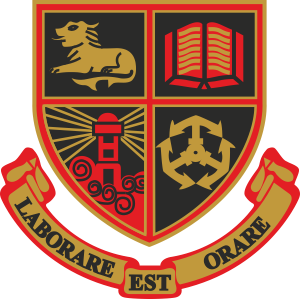
Sea Point High School, formerly Sea Point Boys High School, is a co-educational public high school in Main Road, Sea Point, Cape Town, South Africa. The school was established on 21 April 1884. In 1925, the senior grades were separated from the junior grades. In 1989, the school merged with Ellerslie Girls’ High School after becoming co-educational.
Sea Point Boys connected to Plunyan
 Source: kehilalinks.jewishgen.org/plunge/Home.html
Source: kehilalinks.jewishgen.org/plunge/Home.html















August 2020, For release: Upon receipt
Contact: Sandra Golden, Publicity Chair, IAJGS, publicity@iajgs2020.org
Perth resident elected to International Jewish Genealogy Board
Eli Rabinowitz, a Perth, Australia, resident, was elected to the Board of Directors of the International Association of Jewish Genealogical Societies (IAJGS) at its International Jewish Genealogy Conference, presented virtually on Aug. 12. The Conference drew more than 2300 registrants from 28 countries.
Eli has researched his family’s genealogy and associated Jewish cultural history for over 30 years. A South African-born Australian, Eli has travelled extensively, writing about Jewish life, travel and education on his website, Tangential Travel and Jewish Life. http://elirab.me
Eli writes and manages 87 Jewishgen KehilaLinks, and over 750 WordPress posts. His articles have appeared in numerous publications. Eli has lectured internationally: at educational institutions, commemorative events, at IAJGS and other conferences, and online platforms.
He established the Partisans’ Song Project, and was awarded a U.S. government cultural grant for his WE ARE HERE! Human Rights and Social Justice initiative, https://wah.foundation.
Eli has an Economics Honours degree from the University of Cape Town.
IAJGS is an umbrella organization of more than 91 Jewish genealogical organizations worldwide. The IAJGS coordinates and organizes activities such as its annual International Conference on Jewish Genealogy and provides a unified voice as the spokesperson on behalf of its members. The IAJGS’s vision is of a worldwide network of Jewish genealogical research organizations and partners working together as one coherent, effective and respected community, enabling people to succeed in researching Jewish ancestry and heritage. Find the IAJGS at: www.iajgs.org and like us on Facebook at http://www.facebook.com/iajgsjewishgenealogy.


Atzalynas Gimnazija, Kedainiai Lithuania
Reflecting back to June 2019
Rabbi Dan Fink
Bobbie Lamont
Eli Rabinowitz
13 June 2019
VIDEO OF OUR EVENT IN LITHUANIA

For video, click here:
Source: www.youtube.com/watch?v=pZXBEuPfeFc


At the school
At the cemetery
At the Holocaust site
Vale Simonas Dovidavicius.
Standing between Laima Ardaviciene and me in Kėdainiai, Lithuania on 15 June this year. Simon passed away last week and was laid to rest on the 18th December 2019.




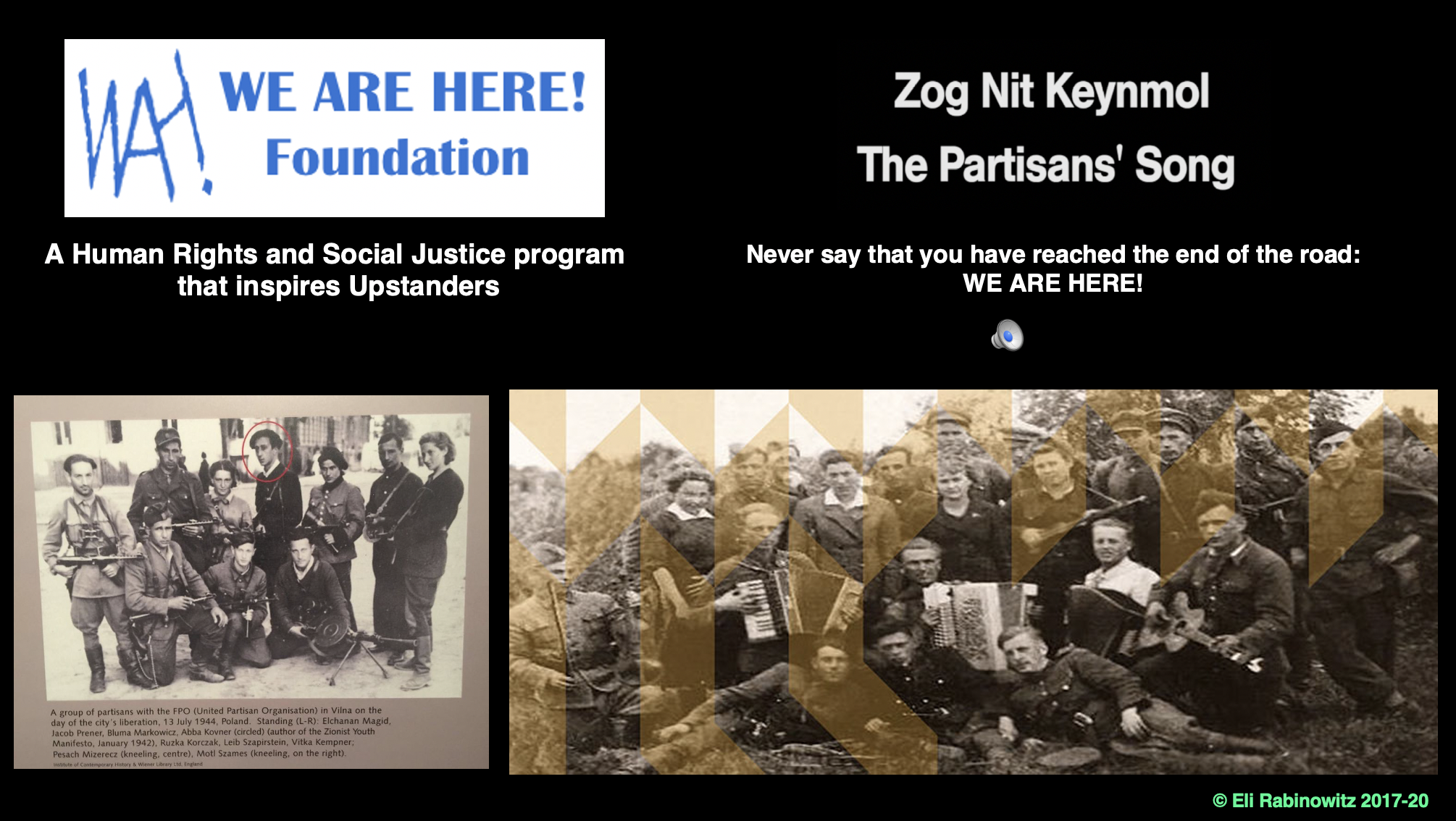





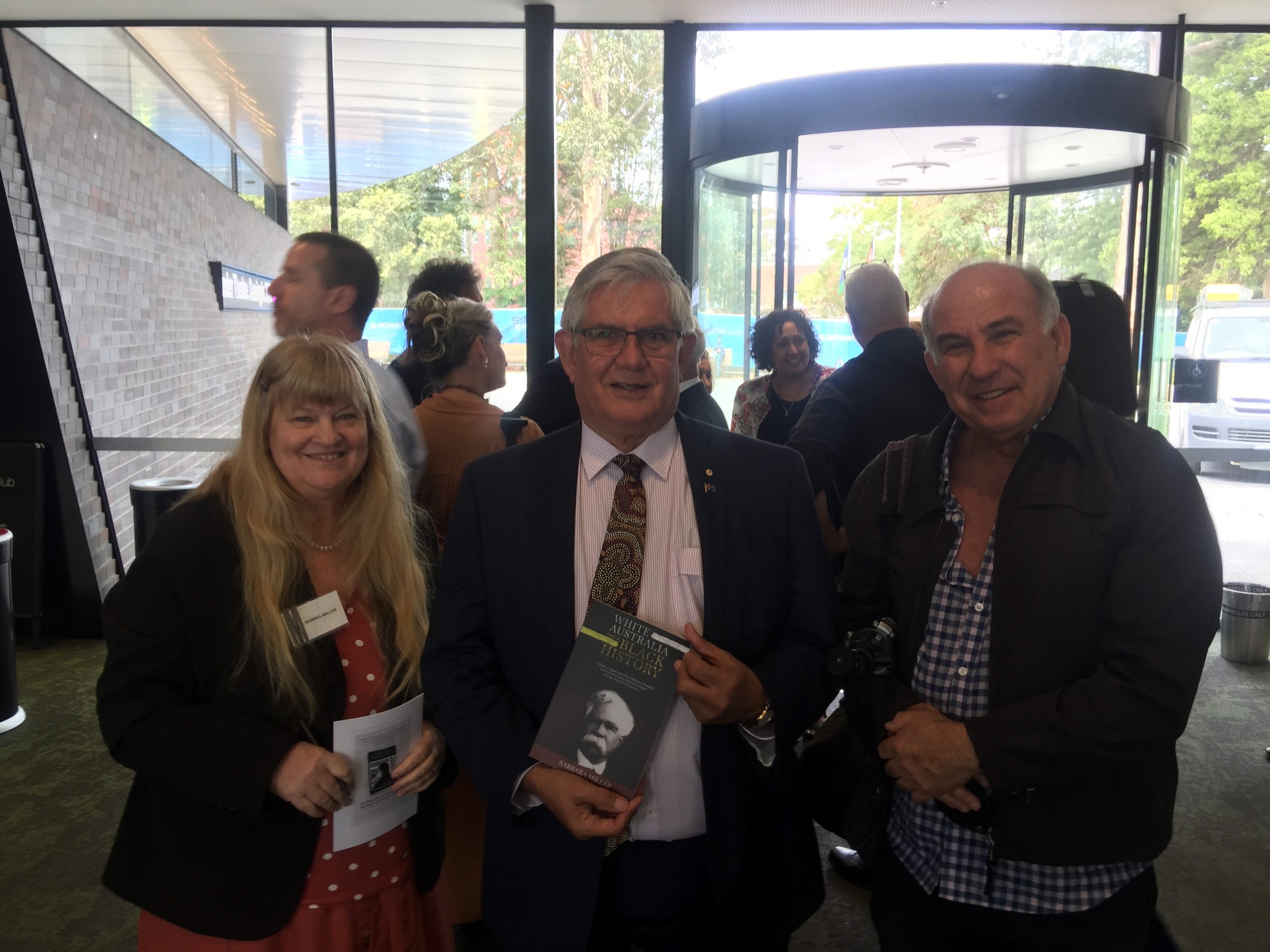
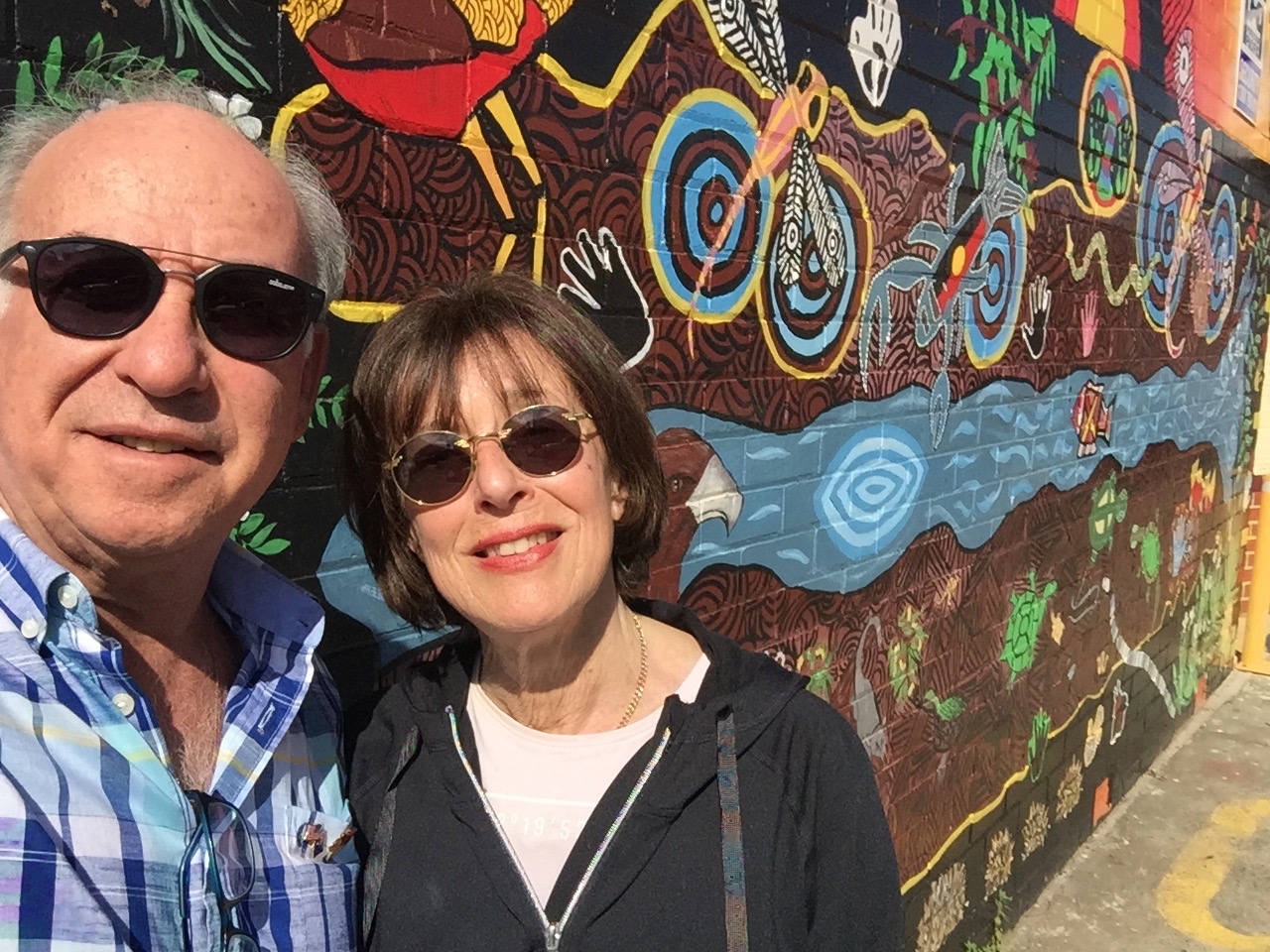


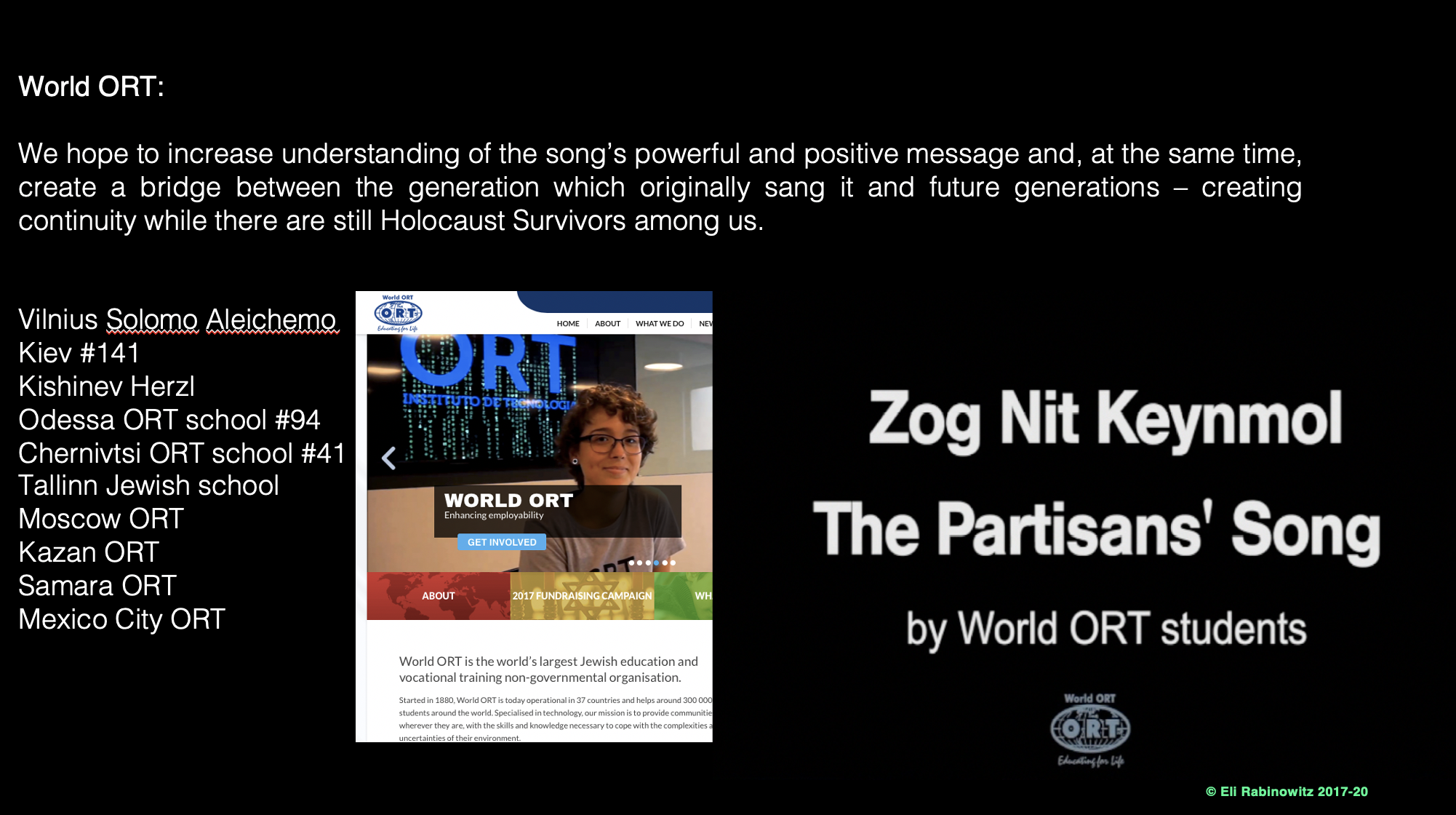
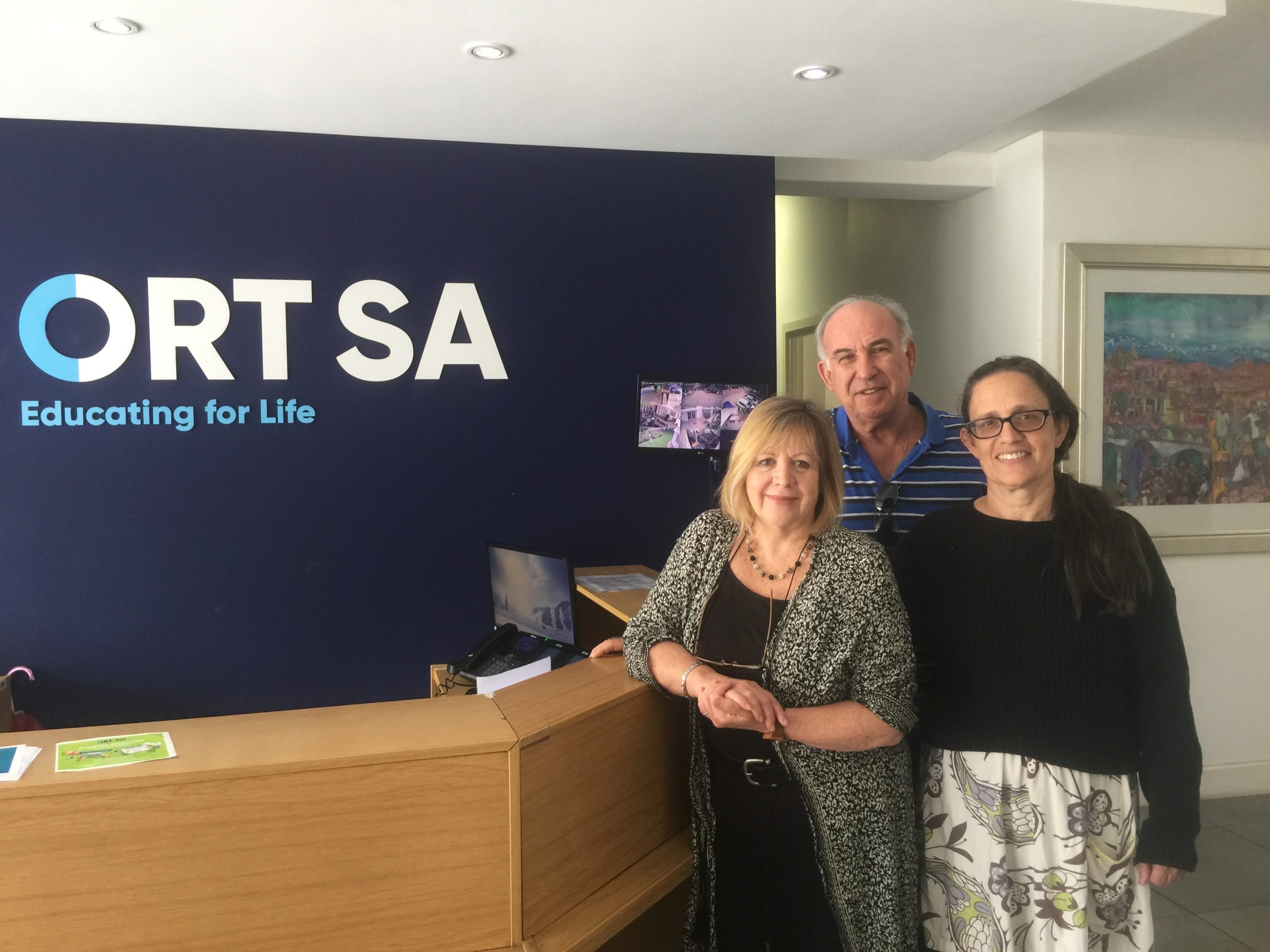
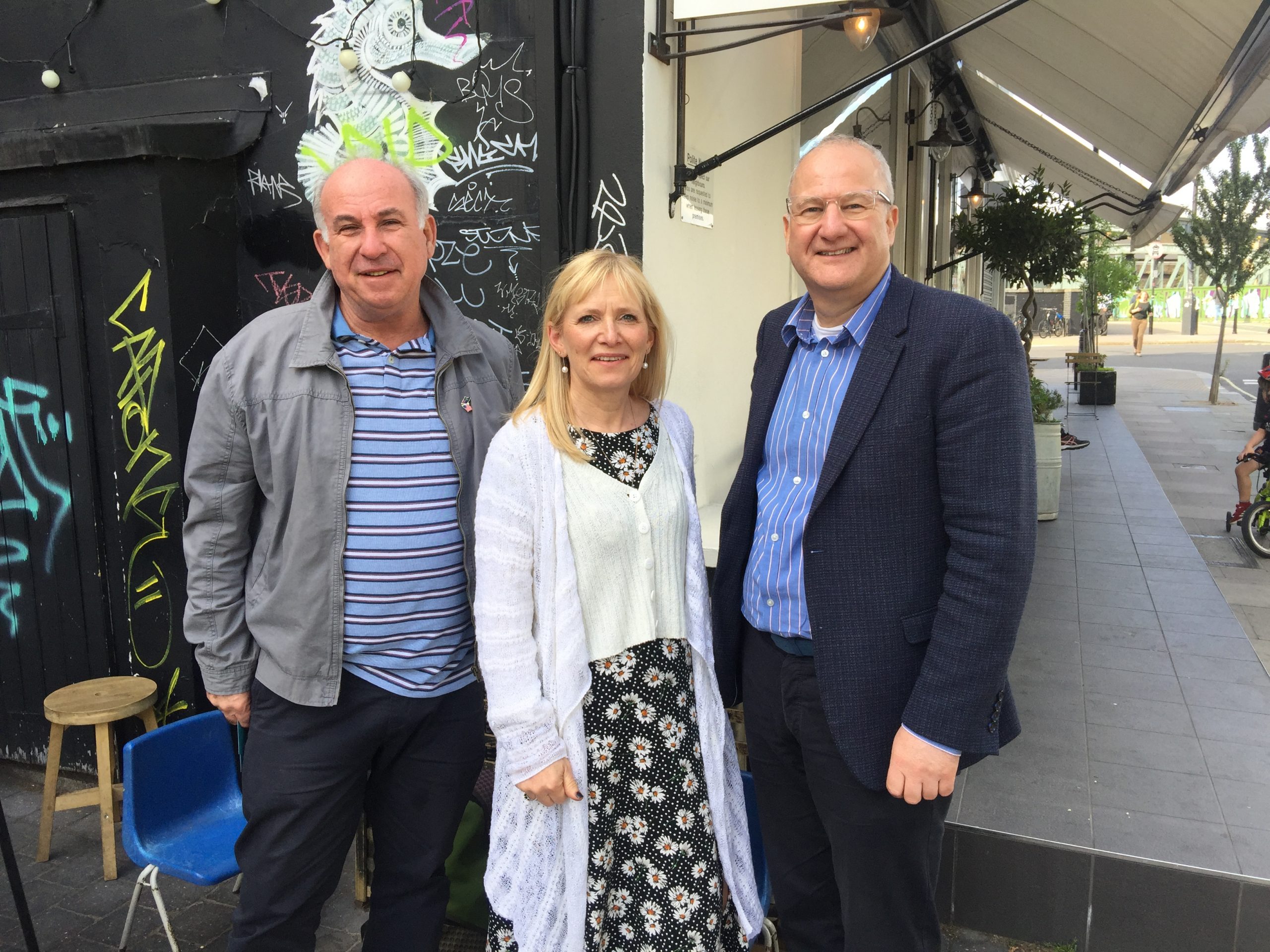

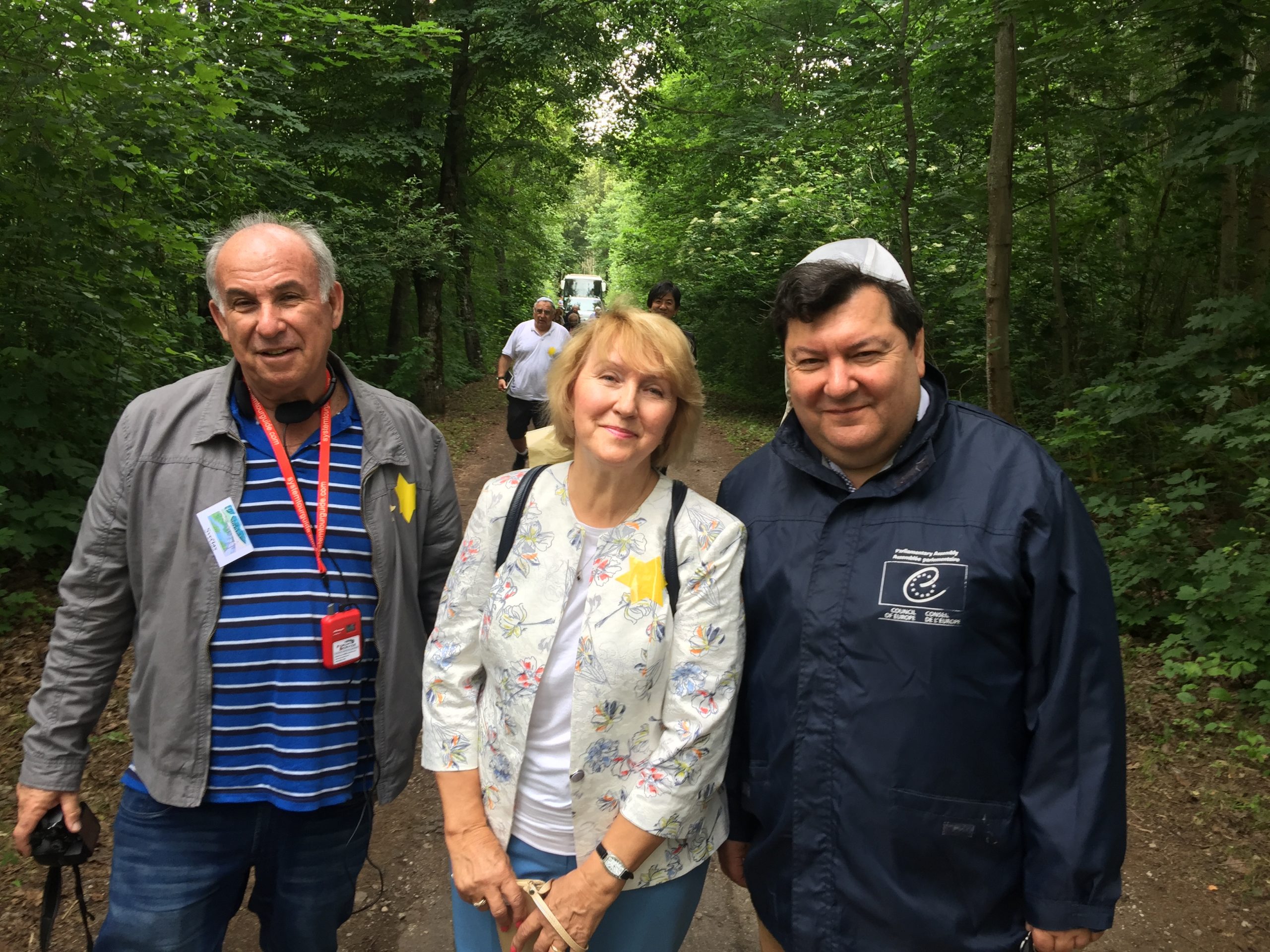




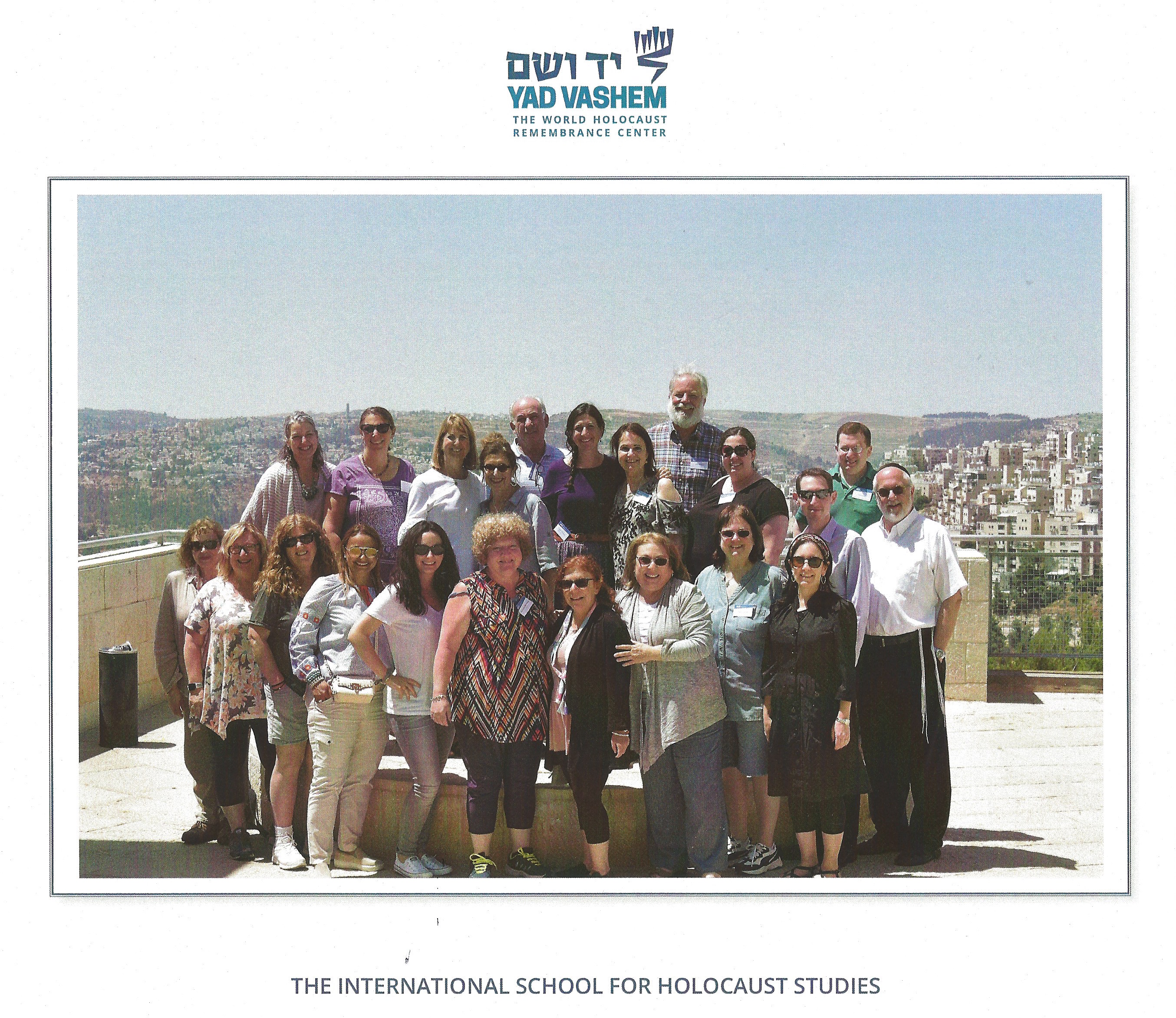
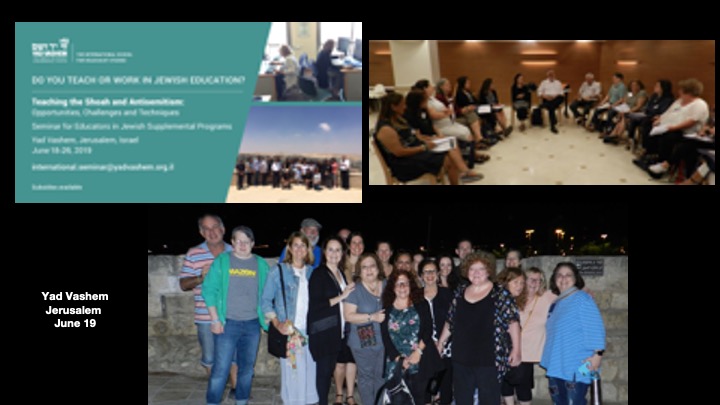




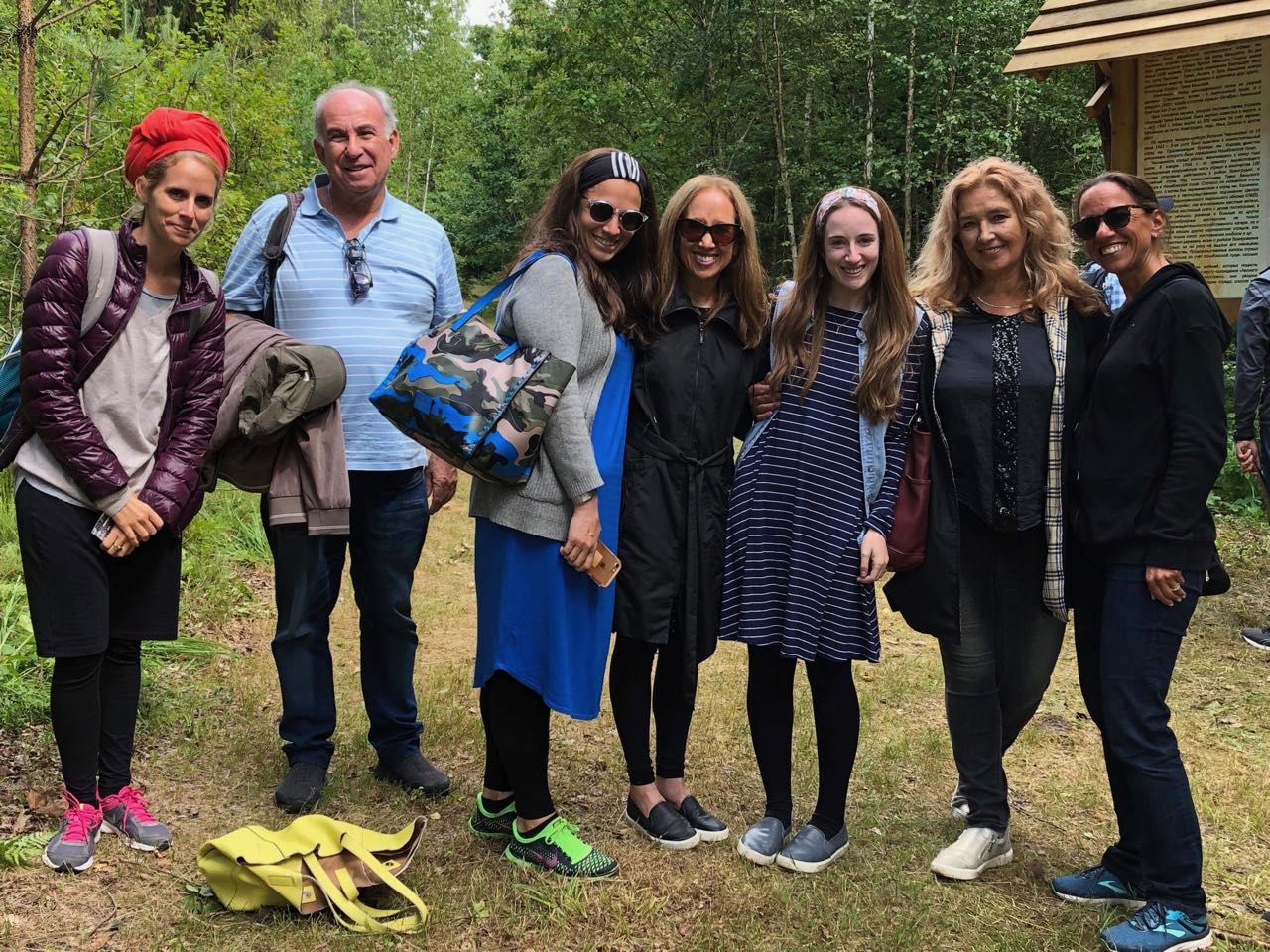
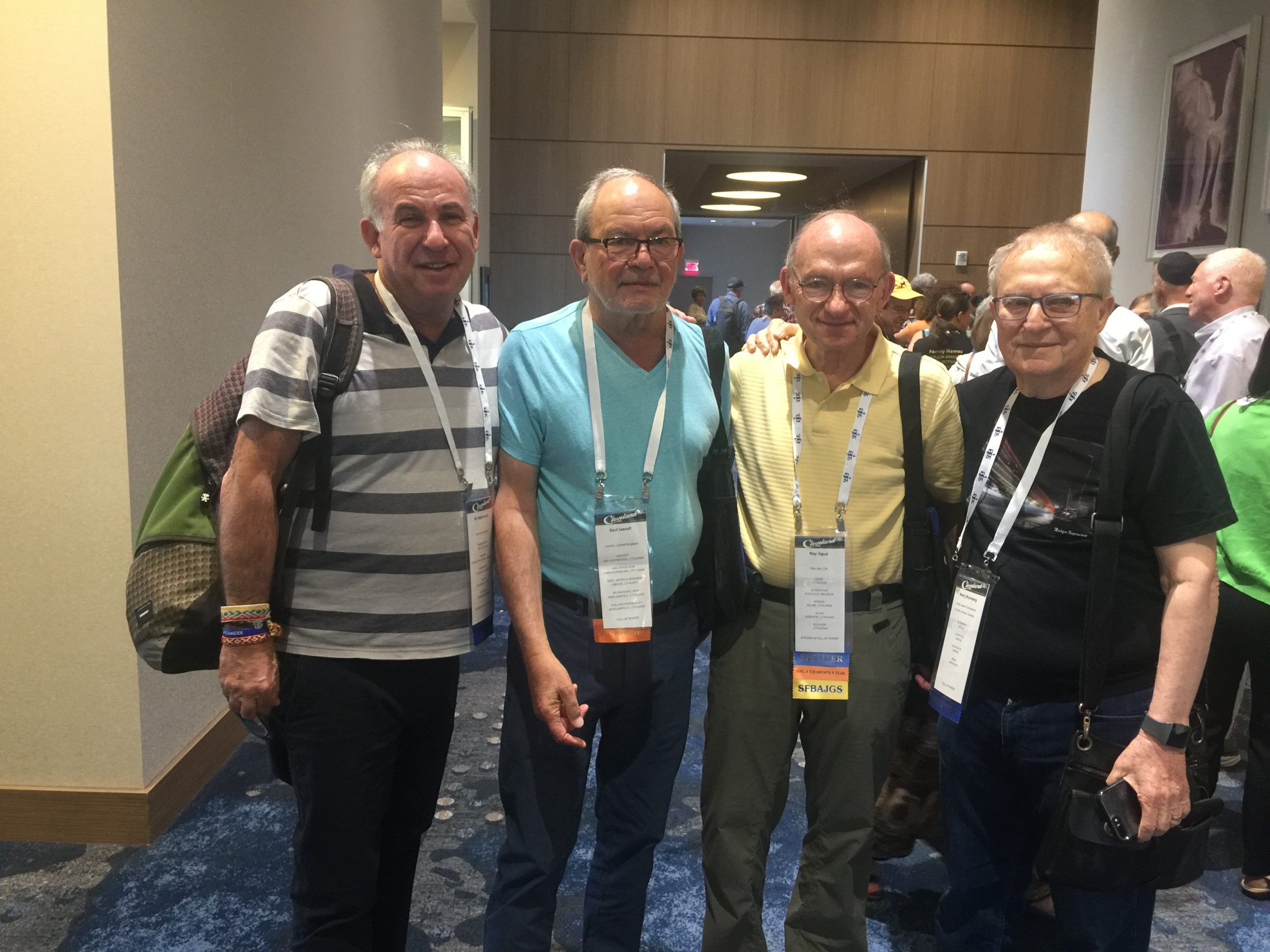




South Africa – Footage from SAJBD Facebook Live Stream with thanks
Source: youtu.be/ab_o311MR6Y


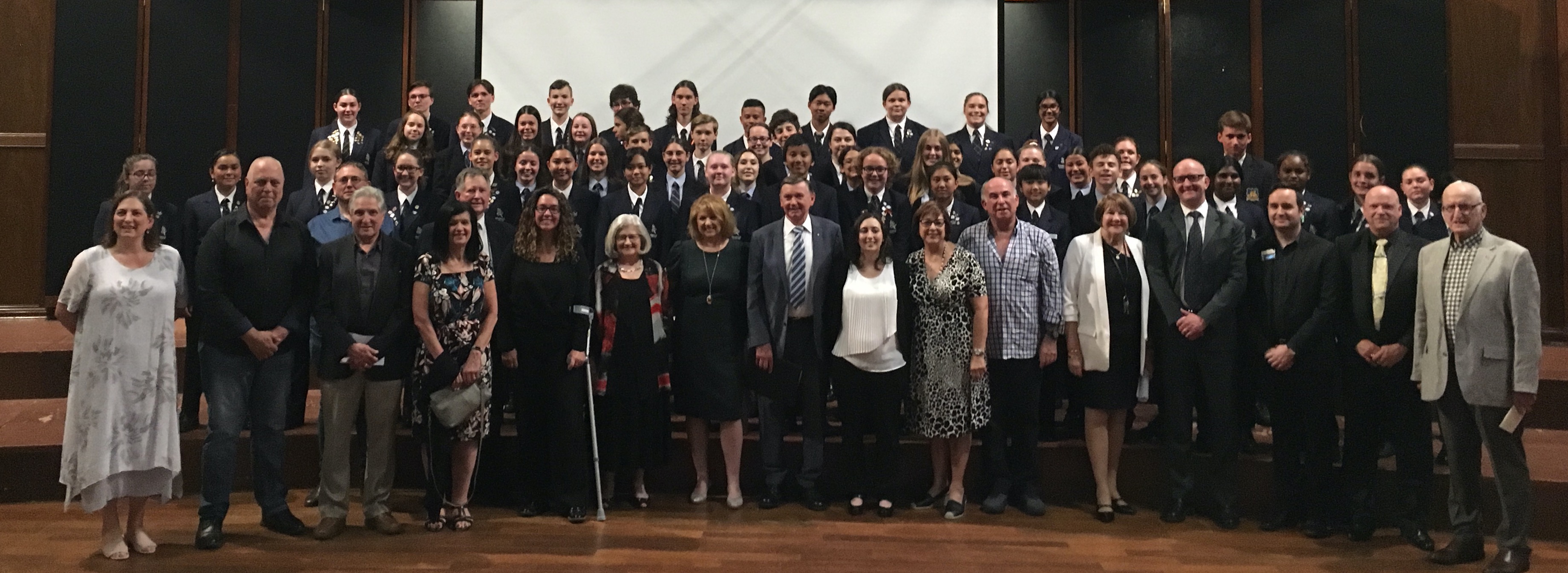
At Perth Modern School at Kristallnacht Commemoration on 10 November 2019 The joint choir of Ellenbrook Secondary College and Carmel High School The World Premiere performance at Ellenbrook Secondary
Source: wah.foundation/program/

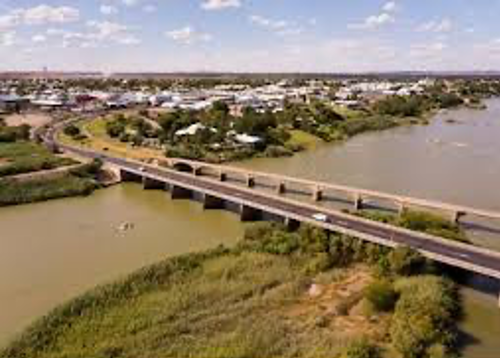
Upington, The Coronavirus Diary
and the amazing story of Philip and Augusta Sussman
Compiled by Geraldine Auerbach, MBE, London, April 2020
My third great grandfather, Avraham Shlomo Zalman Zoref, was the first official victim of terror in the modern era, recognised by the State of Israel – see below.

Rabbi Avraham Shlomo Zalman Tzoref was killed trying to rebuild the Hurva Synagogue in 1851.
Source: www.haaretz.com/1.4977625
Rabbi Avraham Shlomo Zalman Zoref also known as Ibrahim Salomon (1786-1851), born in Kėdainiai, was one of the first pioneers who rebuilt the Ashkenazi Jewish community in Jerusalem in the beginning of the 19th century.
After making Aliyah and arriving in Ottoman Jerusalem, in 1824 the rabbi was sent to Constantinople by the head of the Perushim of Jerusalem, and succeeded in procuring a royal firman, commanding the kadi of Jerusalem to enforce the declaration of debt annualization concerning the Ashkenazi Jewish community of Jerusalem.[1]
With the annexation of Jerusalem by Muhammad Ali of Egypt in 1831, a window of opportunity arose for the Perushim. On 23 June 1836, after traveling to Egypt, rabbi Zoref, together with the backing of the Austrian and Russian consuls in Alexandria, obtained the long-awaited firman for the reconstruction of the Hurva Synagogue.
Zoref became deeply engaged with Jewish lands seized by the creditors in Jerusalem and appeased the Arabs with annual bribes, but at some point the arrangement ceased and they tried to kill him. One night he was shot at by an unknown assailant who missed but later drowned after falling into a cistern. On a second occasion he was attacked on his way to prayers early one morning. In 1851, Zoref was struck on the head with a sword and died of his wounds three months later.[2]
